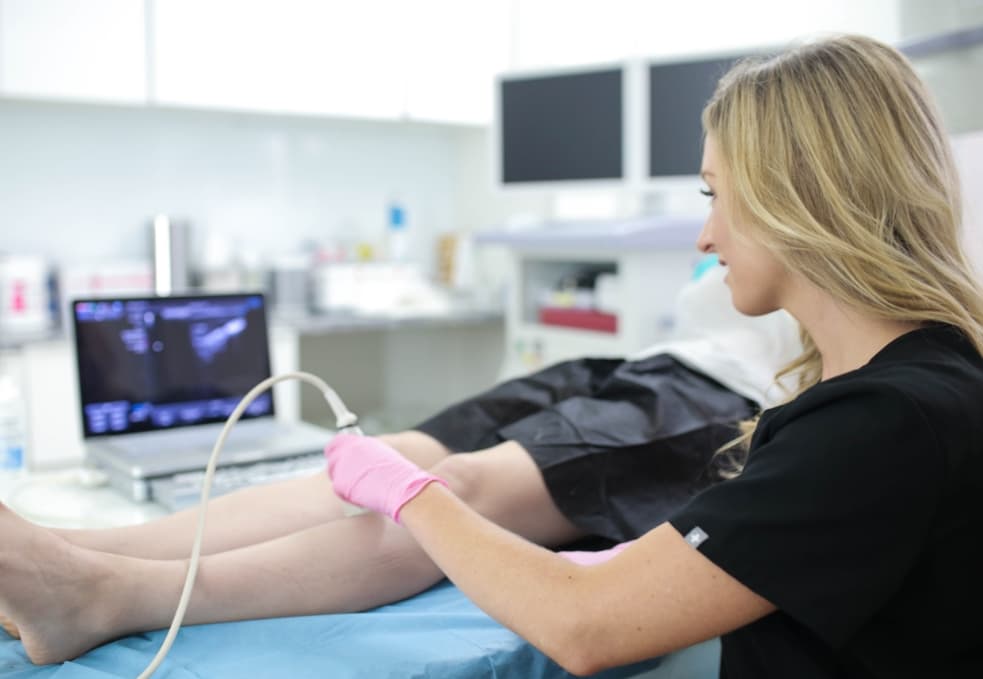Venous reflux is a common problem that can lead to a variety of symptoms, such as swelling, pain, and fatigue. It occurs when the veins in the legs are not able to properly transport blood back to the heart. If you’re wondering whether venous reflux can be cured, the answer is that it depends on the severity of the condition and the underlying causes. At Long Island Vein Center, we specialize in treating venous reflux and can help you understand your options for managing the condition.
Understanding Venous Reflux
To understand how venous reflux works, it’s important to first understand the role of the veins in the circulatory system. Veins are responsible for returning blood from the body’s tissues back to the heart. In the legs, this process is facilitated by a series of one-way valves that prevent blood from flowing back down the leg and pooling in the veins. When these valves are damaged or weakened, blood can flow backwards, causing a buildup of pressure in the veins. This can lead to the symptoms commonly associated with venous reflux, such as leg swelling, pain, fatigue, muscle cramps, leg heaviness, and restless leg syndrome.

Risk Factors for Venous Reflux
There are several risk factors for venous reflux. These include:
- Age: As we get older, the veins in our legs can become less elastic, which can lead to weakened valves.
- Genetics: If you have a family history of venous reflux, you may be more likely to develop the condition yourself.
- Prolonged sitting or standing: When you sit or stand for long periods of time, your leg muscles don’t contract as much, which can impede blood flow.
- Hormonal changes: Hormonal changes during pregnancy or menopause can contribute to venous reflux.
- Obesity: Excess weight can put additional pressure on the veins in your legs, which can increase the risk of reflux.
Diagnosing Venous Reflux
If you’re experiencing symptoms of venous reflux, it’s important to see a vein specialist for an accurate diagnosis. At Long Island Vein Center, we use vascular imaging and duplex ultrasound to visualize the veins in your legs and identify any areas of reflux. This non-invasive test allows us to develop a personalized treatment plan that targets the root cause of your symptoms.
Treating Venous Reflux
The good news is that several minimally invasive treatments can manage venous reflux. At Long Island Vein Center, we offer a range of treatments that can be tailored to your specific needs, including:
- Sclerotherapy: This treatment involves injecting a solution into the affected vein, causing it to collapse and eventually be absorbed by the body. Sclerotherapy is particularly effective for smaller veins.
- Endovenous Laser Ablation (EVLA): This treatment uses a laser to heat and close off the affected vein. EVLA is typically used for larger veins.
- Radiofrequency Ablation (RFA): This treatment uses radiofrequency energy to heat and close off the affected vein. RFA is also typically used for larger veins.
- VenaSeal: This treatment uses a medical adhesive to close off the affected vein. VenaSeal is a great option for those who may be sensitive to other types of treatment.
- ClariVein: This treatment combines mechanical and chemical methods to close off the affected vein. It can be effective for a variety of vein sizes.
- Ambulatory Phlebectomy: This treatment involves removing the affected vein through tiny incisions. Ambulatory phlebectomy can be particularly effective for larger varicose veins.
Managing Venous Reflux
While there is no one-size-fits-all solution for curing venous reflux, there are several things you can do to manage your symptoms and prevent the condition from getting worse:
- Wear compression stockings: Compression stockings apply pressure to the legs, which can help improve blood flow and reduce symptoms of venous reflux. Your vein specialist can recommend the right level of compression and style of stocking for your needs.
- Exercise regularly: Exercise can help improve circulation and keep your leg muscles strong, which can help prevent blood from pooling in the veins. Your vein specialist can recommend exercises that are safe and effective for your condition.
- Elevate your legs: Elevating your legs can help reduce swelling and improve blood flow. Try to elevate your legs for at least 15 minutes at a time, several times a day.
- Maintain a healthy weight: Maintaining a healthy weight can reduce the amount of pressure on your veins and improve blood flow.
- Avoid prolonged sitting or standing: If you have a job that requires you to sit or stand for long periods of time, try to take breaks and move around periodically. This can help prevent blood from pooling in the veins.
- Treat underlying conditions: If you have underlying medical conditions that can contribute to venous reflux, such as high blood pressure or heart disease, it’s important to manage them.
Can Venous Reflux Be Cured?
While there is no cure for venous reflux, the condition can be effectively managed with the right treatment and lifestyle modifications. At Long Island Vein Center, we specialize in treating venous reflux and can help you develop a personalized treatment plan that targets the root cause of your symptoms. Our board-certified vein doctors use the latest techniques and technology to provide minimally invasive treatments that are safe and effective.
If you’re experiencing symptoms of venous reflux, don’t wait to seek treatment. Contact us today to schedule a consultation and take the first step towards healthier, more comfortable legs. We offer free insurance verification even before the first appointment, so you can be confident that you’re making the best choice for your health. Our locations in West Islip, Jericho, Hampton Bays, and Port Jefferson make it easy to access our expert care, no matter where you are.

